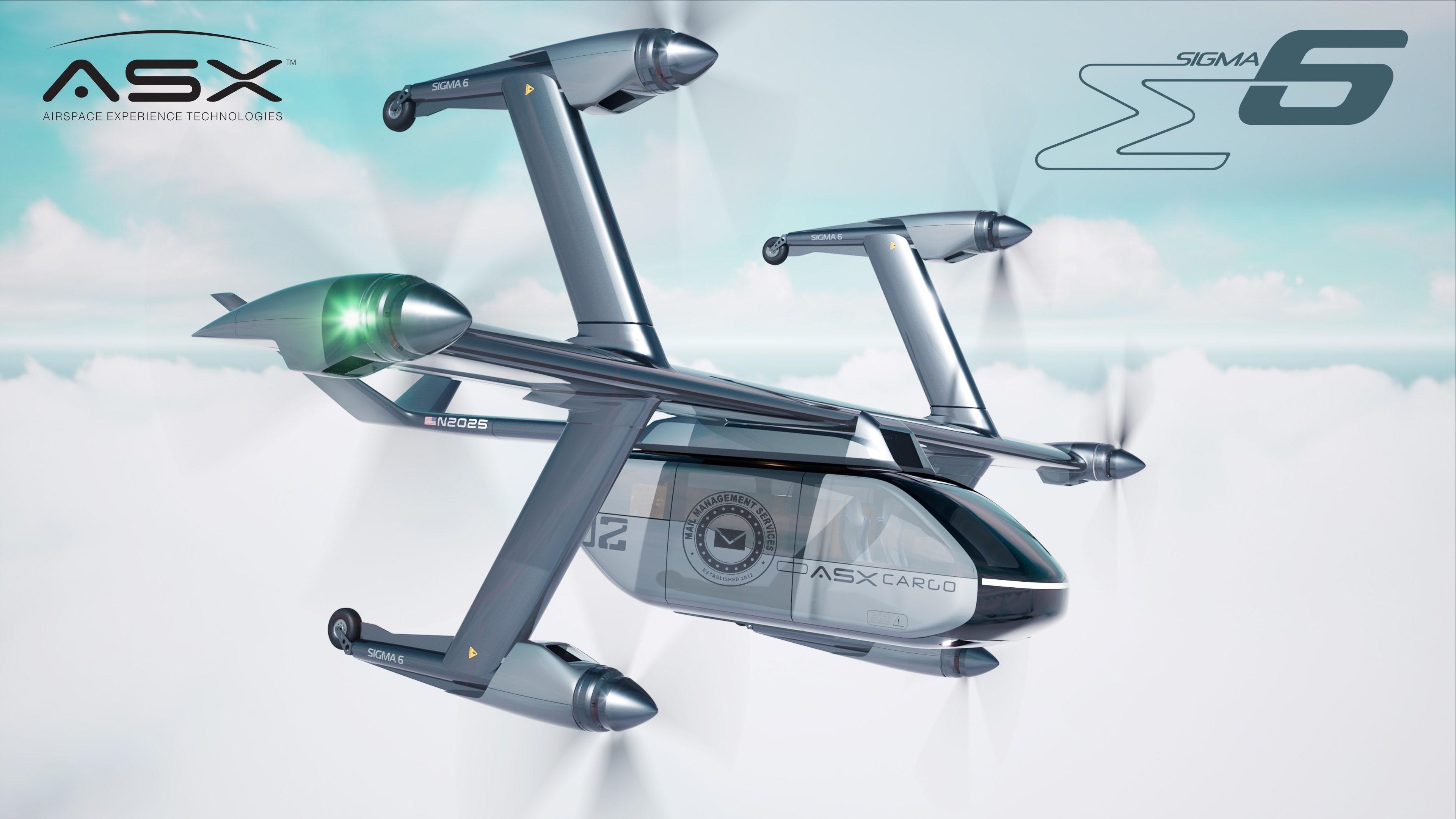
ASX’s Sigma-6 has six rotors on a tilting wing, interchangeable payload modules and an automated ground vehicle to handle them.
Credit: Airspace Experience Technologies
Airspace Experience Technologies (ASX), the Detroit-based startup building an autonomous, tiltwing electric vertical takeoff and landing (eVTOL) vehicle with interchangeable payload pods, has agreed to lease 50 aircraft to Nebraska-based Mail Management Service (MMS), a contractor that delivers mail and packages on behalf of the United States Postal Service (USPS).
Announced at CES in Las Vegas on Jan. 6, the agreement will see ASX begin deliveries in 2025. It comes as part of an effort by MMS to electrify its fleet and infrastructure across its facilities, which are located in Colorado, Michigan, Missouri, Nebraska, Texas and Wisconsin.
“They’re really looking at using these vehicles to support bulk mail distribution from their distribution centers–most of which are located adjacent to USPS facilities–to their urban stations in the region,” ASX co-founder and CEO Jon Rimanelli tells Aviation Week. “Right now, they’re delivering everything by truck, and in urban areas, those trucks are stuck sitting in traffic a lot of the day. So, they’re trying to improve the efficiency of their delivery by skipping over all that congestion.”
The ASX Sigma-6 is notable for its modular payload system that allows for interchangeable plug-and-play payloads for defense, cargo and emergency response missions. The battery-integrated containers can be easily swapped out in minutes between trips, eliminating the need for charging.
“Our aircraft will not be sitting around waiting for a recharge, and that is one of the big differentiators for us,” Rimanelli says.
The company plans for the containers to be rapidly removed and installed by an ASX-engineered robotic ground shuttle that would interface with the Sigma-6’s release-and-attach system. Rimanelli says that the ground shuttle–currently in the technology demonstrator phase–would offer the ability to “hotspot” at indoor locations like an automotive plant or distribution center where the ground vehicle could be loaded inside and driven out to the flight line.
Initial launch applications for the Sigma-6 will include standardized modules for cargo, defense and emergency rescue, with passenger services a possibility in the future, Rimanelli says. The aircraft will come in two designs: an all-electric model that can transport 2,000 lb. up to 75 mi. and a hybrid-electric design that can move 2,000 lb. up to 380 mi.
The Sigma-6 would be remotely piloted with Level 4 high-level automation, with an operator in the loop but the aircraft performing many automatic functions including obstacle avoidance and proximity sensing, Rimanelli says.
ASX had been preparing to test a full-scale prototype of the Sigma-6, but the vehicle still does not have a battery after the company’s contract with its former battery supplier fell through when that company was acquired by another OEM. In the meantime, the Sigma-6 is relying on partial “validation batteries” that offer about one-sixth of the total battery power required to complete a flight, Rimanelli says.
The company’s testing campaign has been put on hold while it seeks a new battery supplier. In the meantime, Rimanelli says it is mainly focused on finalizing a design for a production-intent vehicle.
ASX is looking to complete full FAA certification by late 2026 or early 2027, according to Rimanelli.
In addition to the latest order, ASX has previously announced leasing agreements with two Michigan-based companies. Helicopter sightseeing operator MyFlight Tours has agreed to lease up to 25 aircraft and aerospace and automotive logistics provider ICAT Logistics will lease up to 25 for expedited freight delivery services.





